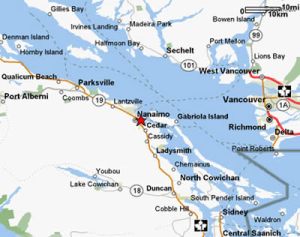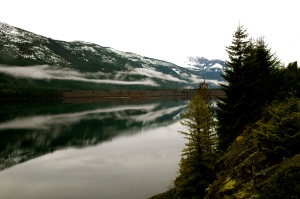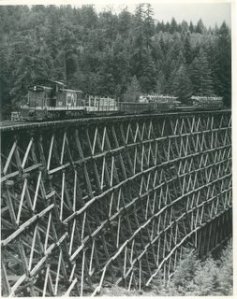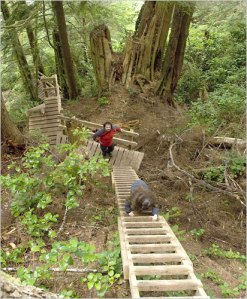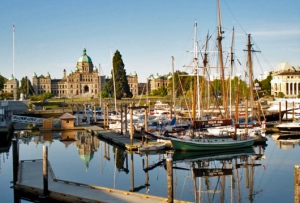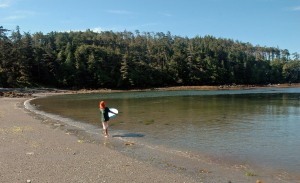They couldn’t have timed it better. It was the last-but-one week in June and the Telus World Skins golf game was being hosted at Bear Mountain Resort. Ontario’s Mike Weir beat out an international field to win in front of a gallery of 5,300 fans and the verdict was that the event had been a resounding success. What better way to begin a new chapter in the colourful story of Bear Mountain, Vancouver Island’s largest resort development project?
A month earlier things could hardly have been worse. The BC Supreme Court declared the Bear Mountain Master Partnership bankrupt after it been placed under creditor protection at the request of HSBC, its largest secured lender. The bank was owed $250 million, or over 80% of Bear Mountain’s total debt. The Court issued a short stay of proceedings to allow the Telus event to be held but for Len Barrie and his colleagues in the Master Partnership, the game was up.
So what does the future hold for the Bear Mountain Resort, its several hundred residents, property owners and other interested parties? First, it’s clear that HSBC is intent on systematically recouping as much of its debt as possible. It has appointed a new CEO to replace Len Barrie the former NHL player who in 2001, with other investors, purchased 1,235 acres of managed forest land at Skirt Mountain and began the real estate ride of his life.
HSBC and Bear Mountain’s new CEO have much to do in order to realize the resort’s remaining assets at the kind of values that justify the bank’s new level of commitment to the project. Patience, courage and a clear vision will be essential. There are some big decisions to be made in addition to the myriad day-to-day issues associated with a major real estate development that, according to HSBC, has been defaulting on its debt repayments since 2008.
The stakes are high, not only for HSBC but also for its current residents. Most bought into the Bear Mountain dream during a rising real estate market and, for a while, watched their investment make rapid and considerable gains. They were delighted to be part of the largest, most ambitious and most talked-about master planned community on Vancouver Island. Len Barrie is best described as a ‘force of nature’ (though others might use a less flattering epithet). His personality helped feed the hype that extended from Victoria to Calgary and beyond. The old adage that home values in a master planned community command a 10% premium over comparable homes in ‘unplanned’ neighbourhoods seemed conservative once Mr. Barrie’s sales team began talking.
The best master planned communities exude consistent higher-than-average quality, well maintained and managed amenities and common areas – and, most importantly, a clear, compelling vision that stands the test of time. These places attract discerning owners; ones that are proud of their homes and their neighbourhood and who become important ambassadors – and, in reality, the best sales people – for the community as a whole. All well and good when the sun is shining and demand outstrips supply. However, these same folk react badly when they feel abandoned or let down by the community’s developer.
Its once-proud property owners watched Bear Mountain slip into bankruptcy while detractors rubbed their hands in glee. The information vacuum was filled quickly by rumor and innuendo. An unfinished highway interchange, essential to the long-term future of Bear Mountain and dependent on it as a source of funding, became the ‘bridge to nowhere’ while Len Barrie’s increasingly threadbare claims to have found a new purchaser for Bear Mountain further stretched the credibility of the community. Even tactics that in different circumstances would go unnoticed were pounced upon; some heavily discounted condominium prices, promoted by the Bear Mountain sales team, were described in the press as ‘a fire sale’. This, while other condo sellers in Victoria were quietly raising their asking prices.
Now is the time to fill the vacuum with facts – and a new vision for the future. When will the vital interchange be completed? How will development over the medium and long-term be planned and executed? How will the vacant commercial property be tackled? Do the two golf courses and the hotel have sustainable futures? What will happen to Robert Quigg’s stalled Capella development, a component of the resort? We know that the new Bear Mountain management team will have to address these questions, and many more, as it markets the property to potential purchasers and developers. Keeping the residents informed and winning their confidence in the future will be just as important.
Perhaps the biggest conundrum for HSBC is how to maintain Bear Mountain’s standard of quality – set during the good times – while generating cash from the sale of its parts and maximizing the absorption of its building lots. As a friend of mine said to me recently “Once a community of this size lowers its standards by chasing the market downwards, its brand never recovers”.
With the patience and support of HSBC, Bear Mountain’s new CEO has the opportunity to create a vision and a strategic plan that are forward looking and capable of repositioning the master planned community as among the most desirable of its kind in North America. The success of the Telus World Skins Game and the positive news coverage that it generated must have been a great relief to the dispirited residents and battered investors in Bear Mountain. Now the challenge for HSBC and the new CEO is to build on that.


